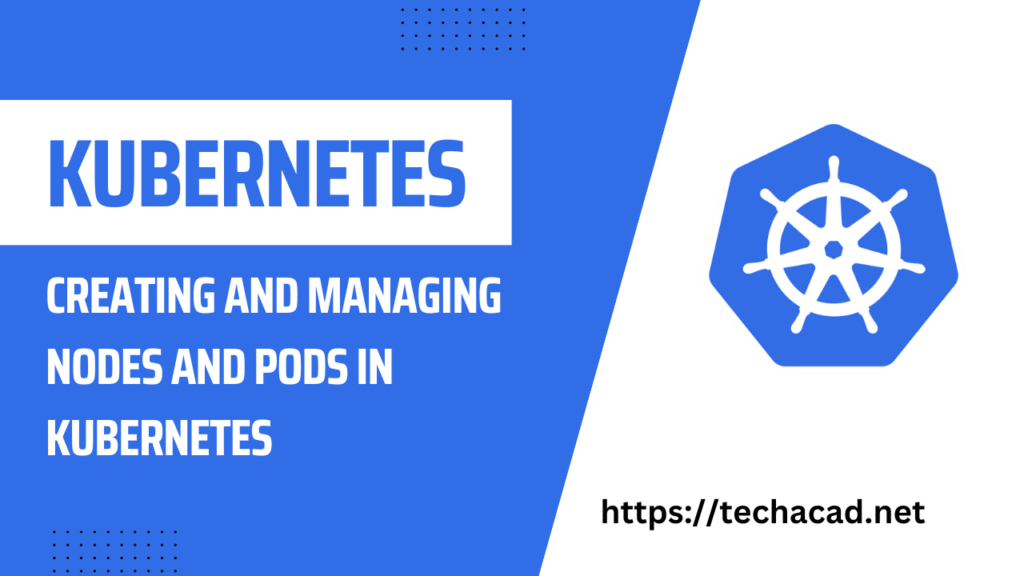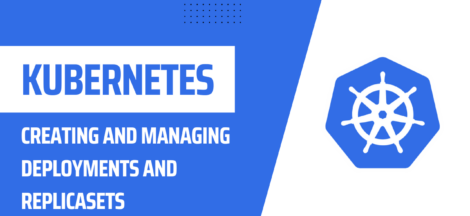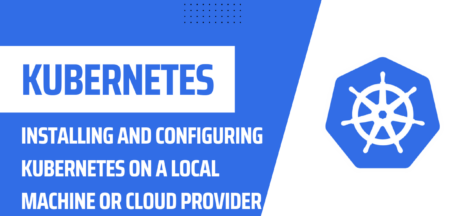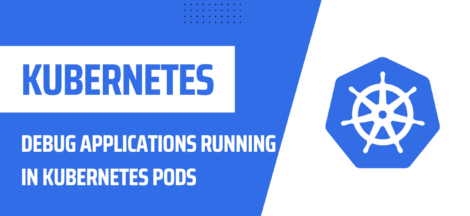Creating and Managing Nodes and Pods in Kubernetes
Kubernetes is an open-source platform for automating deployment, scaling, and operations of application containers across clusters of hosts. In this tutorial, we’ll be discussing the basic concepts of nodes and pods in Kubernetes, and how to create and manage them.
Node: A node is a worker machine in a Kubernetes cluster. It can be a physical machine or a virtual machine, and it runs pods that contain your application containers. Nodes have a number of components installed, including the Kubernetes control plane components and the container runtime, such as Docker.
Pod: A pod is the smallest and simplest unit in the Kubernetes object model. It represents a single instance of a running process in your cluster. A pod contains one or more containers, and it’s responsible for providing shared storage, network, and other resources for its containers.
Creating a Node:
To create a node, you’ll need to run a command on the master node to add a new node to the cluster. The exact command will depend on the type of node you want to add (physical or virtual), but the basic steps are as follows:
- Preparation:
- Decide on the type of node you want to create: physical or virtual.
- Make sure you have all the necessary packages, dependencies, and network configurations in place for the node.
- Have access to the master node of your cluster, where the join command will be executed.
- Download the necessary components:
- Download the necessary packages and dependencies for the node. This may include the Kubernetes control plane components, container runtime (such as Docker), and any other required tools or libraries.
- Set up networking and firewall:
- Configure the networking and firewall settings for the node. Make sure the node can communicate with the rest of the cluster, and that the necessary ports are open.
- Install the components:
- Install the Kubernetes control plane components, container runtime, and any other required components on the node.
- Join the node to the cluster:
- Run the join command on the master node, which will add the new node to the cluster. The exact command will depend on the type of node and the specific components you have installed.
- Verify the node is ready:
- Use the kubectl get nodes command on the master node to verify that the new node has joined the cluster and is ready to run pods.
Creating a Pod:
To create a pod, you’ll need to define a pod definition file in YAML or JSON format. The file will specify the desired state of the pod, including the containers that should run inside it. You can then create the pod by running the kubectl create command.
Define the Pod:
- Write a pod definition file in YAML or JSON format, which specifies the desired state of the pod. The file should include the following information:
- The API version of Kubernetes you want to use (e.g. v1).
- The kind of resource you want to create, which is “Pod”.
- Metadata for the pod, such as its name.
- The specification for the pod, including the containers that should run inside it, the images they should use, and any port mappings or environment variables.
Create the Pod:
- Use the kubectl create command to create the pod, and pass the pod definition file as an argument.
Verify the Pod is running:
Use the kubectl get pods command to check the status of the pod and verify that it is running.
Here is an example of a simple pod definition file in YAML format:
apiVersion: v1
kind: Pod
metadata:
name: mypod
spec:
containers:
name: mycontainer
image: nginx:latest
ports:
containerPort: 80The above example creates a pod with a single container running the latest version of the Nginx web server, with port 80 exposed. You can customize the pod definition to fit your specific requirements by adding or modifying containers, environment variables, or other specifications.
Managing Nodes and Pods: Once you’ve created nodes and pods, you’ll need to manage them over time to ensure they’re running smoothly and to handle any issues that arise. Here are some common management tasks:
- Scaling: To scale a deployment, you can use the kubectl scale command to increase or decrease the number of replicas.
- Updating: To update a deployment, you can use the kubectl apply command to apply changes to the deployment definition.
- Monitoring: To monitor the health of your nodes and pods, you can use tools like kubectl top, kubectl describe, and kubectl logs to get detailed information about the state of your resources.
- Debugging: To debug issues with your nodes and pods, you can use the kubectl debug command to attach to a running pod and troubleshoot it.
In conclusion, nodes and pods are fundamental concepts in Kubernetes, and understanding them is crucial for effective deployment and management of containerized applications. This tutorial provides an overview of how to create and manage nodes and pods in Kubernetes, and serves as a starting point for further exploration of the platform.




